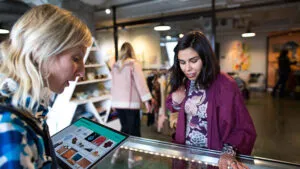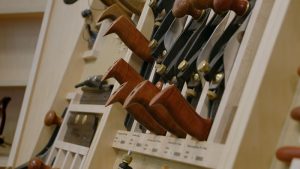
The passport to in-store Omni channel
When I studied at business school, one of the things I learned was that the best way to make money is with other people’s money. The banks do this all the time, and they’ve been very successful following this strategy. Reflecting on this I wondered if a similar approach might hold true in technology. Rather than build my own technology for shoppers in a retail context, was there a way to leverage someone else’s technology to achieve the same end?
The research company IDC explains that a new generation of shoppers are defined as the 5I consumer. They are Instrumented, Interconnected, Informed, In-place and Immediate. These consumers demonstrate that they are very comfortable in a world where the line between the physical and digital experience is becoming less well defined each day.  They will become the foundation for the success of true Omni channel shopping. Understanding this helped me connect the dots between my idea about “borrowed technology” and the way traditional retailers could embrace Omni channel. Recent surveys show that 83% of shoppers use their Smart Phones while shopping. This is why IDC refers to them as “Instrumented”. By engaging shoppers with their own phones, retailers can create an immediate, in-place engaging experience.
They will become the foundation for the success of true Omni channel shopping. Understanding this helped me connect the dots between my idea about “borrowed technology” and the way traditional retailers could embrace Omni channel. Recent surveys show that 83% of shoppers use their Smart Phones while shopping. This is why IDC refers to them as “Instrumented”. By engaging shoppers with their own phones, retailers can create an immediate, in-place engaging experience.
Imagine being able to receive an offer for a new salad dressing while you shop in the produce aisle. Or, tapping a shelf label with your phone to see consumer reviews or a video of someone demonstrating the product before you decide to buy. This takes in-store marketing to a new level. Instead of printing a coupon for a future purchase as you  leave the store you’re able to influence the customer at the most critical moment – their point of decision. Tuku Inc. a Microsoft partner has developed very inexpensive NFC tags that can be attached to displays or signage that can generate rich media content on the shopper’s smart phone. No need to install high priced video displays, (the customer has one in their own pocket). Even better, the interaction generates data that allows the retailer, or a participating supplier to collect and analyze information about their products and the way that shoppers are behaving when they’re making their purchase decision.
leave the store you’re able to influence the customer at the most critical moment – their point of decision. Tuku Inc. a Microsoft partner has developed very inexpensive NFC tags that can be attached to displays or signage that can generate rich media content on the shopper’s smart phone. No need to install high priced video displays, (the customer has one in their own pocket). Even better, the interaction generates data that allows the retailer, or a participating supplier to collect and analyze information about their products and the way that shoppers are behaving when they’re making their purchase decision.
 Phones aren’t just replacing video displays, they are also becoming a means of exchanging currency. That means the traditional Point of Sale (PoS) is being disrupted as well. Recently a global convenience store chain implemented a digital wallet and asked Plexure to help them leverage innovation to drive shopping frequency and basket size. By analyzing real-time purchase transactions, weather data and current location they created tailored messaging to individual customers and generated a 47% increase in average transaction value.
Phones aren’t just replacing video displays, they are also becoming a means of exchanging currency. That means the traditional Point of Sale (PoS) is being disrupted as well. Recently a global convenience store chain implemented a digital wallet and asked Plexure to help them leverage innovation to drive shopping frequency and basket size. By analyzing real-time purchase transactions, weather data and current location they created tailored messaging to individual customers and generated a 47% increase in average transaction value.
Most of these ideas are made possible because the shopper uses their own technology (the Smart Phone) to make their experience more engaging. Each of the interactions provide the retailer with valuable information that they can use to have a better understanding of shopping behaviors, manage their operations more efficiently and grow their business.
Physical stores aren’t going away. In fact, pure play eCommerce companies are investing in bricks and mortar locations themselves. Amazon recently purchased Whole Foods along with opening several of their own bookstores. Other eCommerce players like Warby Parker and Birchbox have opened their own locations. From the other direction, traditional retailers like Walmart are acquiring eCommerce businesses, (they recently purchased Jet.com). All of this goes to show that a convergence of the physical and the digital is well underway. With Smart Phones, the passport to this new world of retail is literally in the palm of your hand.
Amazon recently purchased Whole Foods along with opening several of their own bookstores. Other eCommerce players like Warby Parker and Birchbox have opened their own locations. From the other direction, traditional retailers like Walmart are acquiring eCommerce businesses, (they recently purchased Jet.com). All of this goes to show that a convergence of the physical and the digital is well underway. With Smart Phones, the passport to this new world of retail is literally in the palm of your hand.
Learn more about transforming your businesses by blending online and digital experiences




